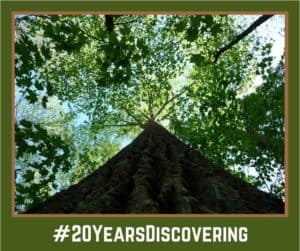
“Each year at this time, colleague Kyle Dexter and I (together with the most amazing set of hard-working volunteers and field friends) escape to collect data on a one-hectare long term study plot nestled in Great Smoky Mountains National Park, under the tallest canopy in eastern North America (it’s true!). We visit the third week of April to collect data on trees, saplings, herbs, lichens, canopy leaf out, etc., in attempt to document change through time. It is only a single hectare, but the work takes a full three days with several sets of helping hands, and we have come to learn and to understand this one hectare extraordinarily well. This is our 12th year of data collection (we established the plot while graduate students at Duke), and so far have documented remarkable trends including earlier phenologies of several herbaceous species as well as dynamic patterns of lichen establishment, growth, and succession. During this time, we have watched logs fall, watched them decay, watched new plants establish within their decaying lignum, and watched small saplings transition to trees. We have watched the die-off of dogwoods, the entrance of yellowwoods, and the somehow survival of the tiniest patch of eastern ramps. Long term plots yield analyzable data only over long term slices of time, but look for a research update somewhere around the 15 year mark!”- Dr. Erin Tripp, University of Colorado, Boulder
#20YearsDiscovering
#WondrousDiversityOfLife


